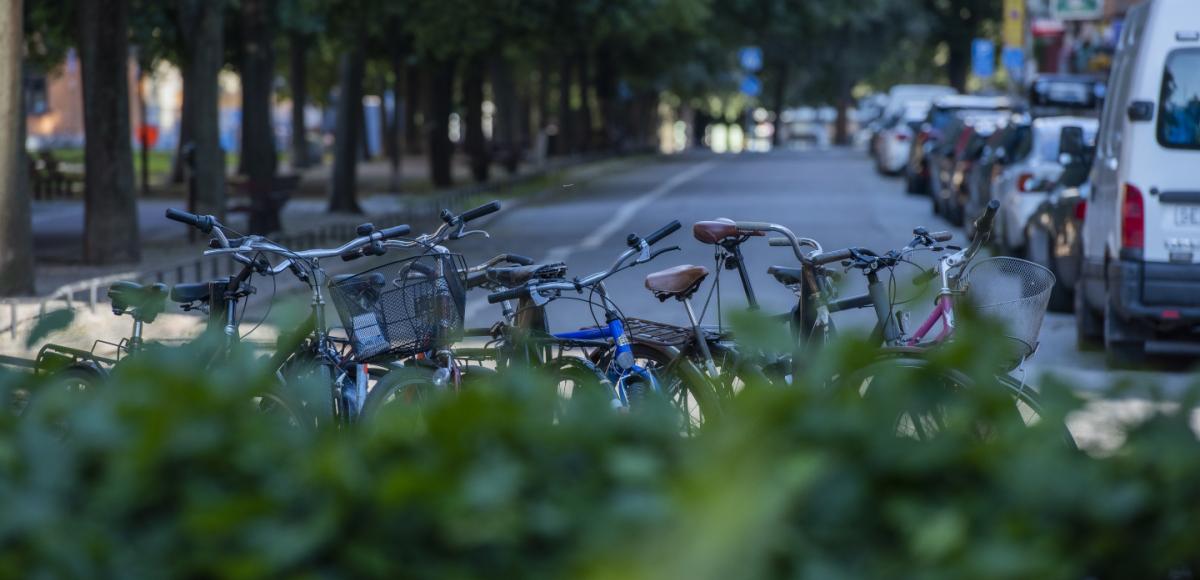
The pizza robot is on its way
Future Cities Insight #25 - The pizza robot is on its way
Can you imagine having the pizza delivered by a robot in the future? If so, you have something to look forward to. Robots that handle the so-called 'last-mile' deliveries on our streets and sidewalks around the cities, will soon be a reality. In the wake of Covid-19, a change in people's attitudes opens up the market for a completely new kind of micro mobility solutions.
Looking at statistics on how attitudes about our future mobility in cities have changed due to lockdowns, it becomes clear that the fear of close contacts with others in the public and closed space will probably persist in the near future. And as long as public transport struggles with face mask restrictions and attempts at distancing with fewer available seats or departures, private commuting options such as the car or bicycle gain natural ground.
The changed mobility patterns also have direct consequences for other industries, where for example, e-commerce breaks new records every week and home deliveries for food, clothing, electronics and furnishings increase as never before. The Association for Danish E-Commerce FDIH) reports that as many as 82 per cent of Danish e-commerce companies had an increase in the second quarter compared with the previous year, and almost ten per cent of these have experienced a doubling. The figures are not unique to Denmark. Similar signals are now appearing in various national and international reports.
Creative micro mobility solutions
And when cities will need to recover from Covid-19, one of the challenges lies precisely in quickly bring together the equation to stay on the course to achieve the Sustainable Development Goals, with the changing attitudes to mobility and its consequences with increased deliveries and private driving. One solution is to open up the creative mobile space, between the already established modes of transport. An example of that is autonomous delivery robots - a market which according to the Market Study Report is expected to have a steady growth of around 18 percent in the next few years, from a turnover in 2019 corresponding from USD 14.18 billion to USD 54.30 billion in 2027.
In the US, the various pilot projects of 'last-mile' robots has intensified. Uber Eats passed Uber's taxi services earlier this year and recently the same company bought Postmate's 'Serve' robot, designed as a Wall-E-like shopping cart for food transport among pedestrians on sidewalks. Amazon is another of the more well-known players that has entered the robot market. Their six-wheeled 'Scout' delivers packages in Atlanta and Franklin, where tests are done in defined residential areas.

The start-up Nuro was founded in 2016 by two former engineers from Google and is another example of a successful initiative. Last year, tests were done with their self-driving unit 'R2' for Walmart in Texas and Arizona, where autonomous home deliveries were made the same day at a lower cost. Around the same time, the Japanese SoftBank invested billions in the business, paving the way for scaling up and also taking ground in hospital environments where they deliver equipment between different care units, and recently they have also been allowed to test drive their units on public roads in California.
But even on European soil, things are starting to move. In Barcelona, the start-up company Eliport develops robots for home deliveries and in Denmark it is bubbling with exciting innovative start-ups, such as the newly founded Meili Robots who have developed a fleet management solution that now allows delivery robots from different manufacturers to communicate and collaborate with each other. Denmark is one of the more offensive countries when it comes to robot technology and from 2021 a new law opens up to allow robots in urban environments for deliveries right to the door.
The Danish proposal is interesting from many perspectives, and truly opens the door for all the creative robot actors waiting behind the scenes. Of course, the challenges are still many and need to be addressed; They include traffic safety, smart services and parking, perceived clutter and accessibility on sidewalks, user acceptance and intuitive interaction, as well as rapid implementation without having to modify existing infrastructure.
But even though the challenges are many, the possibilities are even more, and one thing is for sure: It will not take long time before you will meet a robot on the street - and soon enough you will also be able to book your first robot pizza.

